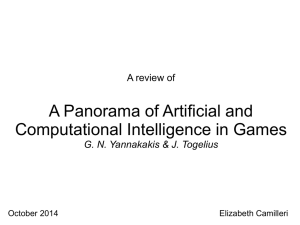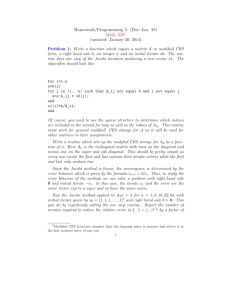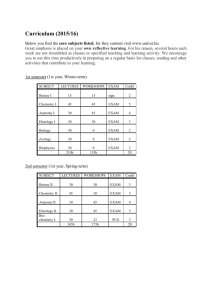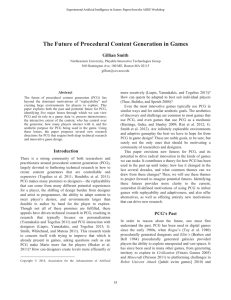Homework/Programming 9. (Due April 9)
advertisement
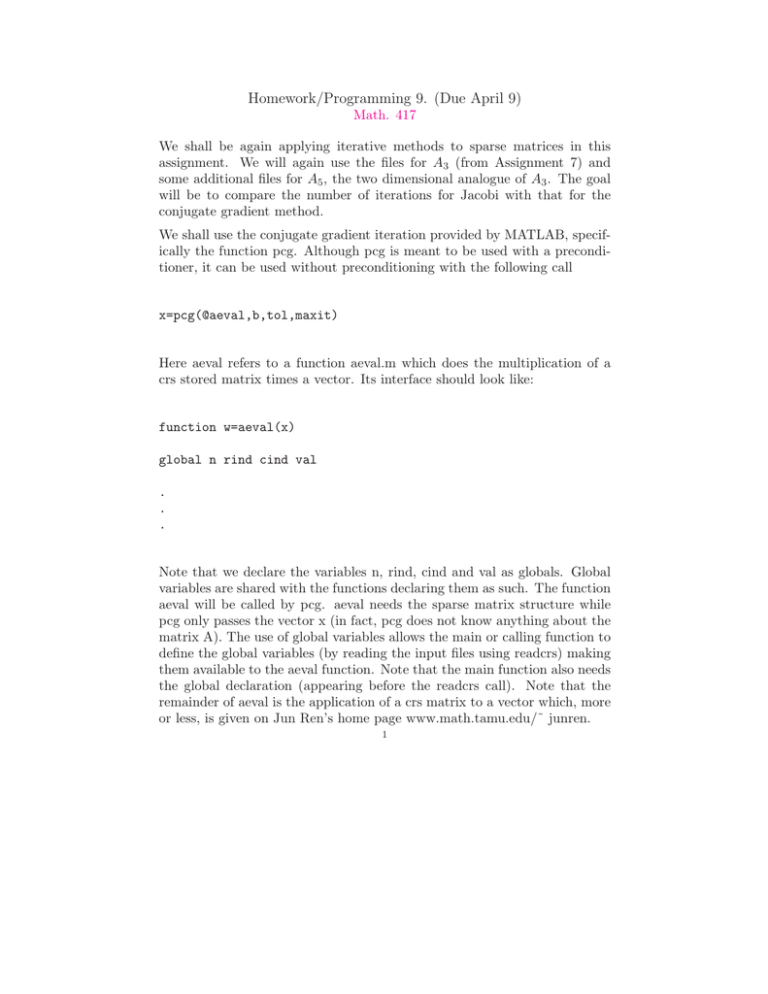
Homework/Programming 9. (Due April 9) Math. 417 We shall be again applying iterative methods to sparse matrices in this assignment. We will again use the files for A3 (from Assignment 7) and some additional files for A5 , the two dimensional analogue of A3 . The goal will be to compare the number of iterations for Jacobi with that for the conjugate gradient method. We shall use the conjugate gradient iteration provided by MATLAB, specifically the function pcg. Although pcg is meant to be used with a preconditioner, it can be used without preconditioning with the following call x=pcg(@aeval,b,tol,maxit) Here aeval refers to a function aeval.m which does the multiplication of a crs stored matrix times a vector. Its interface should look like: function w=aeval(x) global n rind cind val . . . Note that we declare the variables n, rind, cind and val as globals. Global variables are shared with the functions declaring them as such. The function aeval will be called by pcg. aeval needs the sparse matrix structure while pcg only passes the vector x (in fact, pcg does not know anything about the matrix A). The use of global variables allows the main or calling function to define the global variables (by reading the input files using readcrs) making them available to the aeval function. Note that the main function also needs the global declaration (appearing before the readcrs call). Note that the remainder of aeval is the application of a crs matrix to a vector which, more or less, is given on Jun Ren’s home page www.math.tamu.edu/˜ junren. 1 2 For all computations we shall use b(i) = i/n, i = 1, . . . , n as the right hand side vector. The pcg routine checks the relative residual error in the Euclidean norm against the tolerance, i.e., it iterates until (0.1) norm(b − Ax)/norm(b) < tol. It also always uses x0 = 0. For all runs below use tol = .1 and make maxit (for pcg) large enough to reach the tolerance. To compare with the results from pcg, you need to modify your Jacobi iteration of Homework 7 so that it uses the same x0 , b and stopping criteria (0.1). Problem 1. Develop a main and aeval routine for implementing pcg with crs structure for A read from a file. Modify your Jacobi routines from Homework 7 as discussed above. Apply pcg and your modified Jacobi iteration to the six crs files of Homework 7 with stopping criteria, initial iterate and b as discussed above. Report the number of iterations and the achieved value for norm(b − Ax)/norm(b) for both Jacobi and pcg (pcg automatically reports these values). We next consider the matrix A5 . This matrix comes from applying finite differences to a boundary value problem on the unit square in R2 . It is defined in terms of a parameter m and leads to an SPD problem with n = m2 unknowns. The m2 × m2 matrix is sparse and contains at most 5 entries per row. In this case, the spectral radius of GJ and the condition number K(A5 ) grows like O(m2 ) (not O(n2 )). The crs data for the A5 matrices are given below: (a) a5-4.txt (b) a5-8.txt (c) a5-16.txt (d) a5-32.txt (e) a5-64.txt (f) a5-128.txt 3 The parameters 4, 8, 16, . . . , 128 refer to m. These files are much larger than those for A3 since n = m2 . Problem 2. Apply pcg and your modified Jacobi iteration to the six crs files for A5 given above. Report the number of iterations and the achieved value for norm(b − Ax)/norm(b) for both Jacobi and pcg. Depending on what computer you are using, you may find that the compute time for the Jacobi iterations is getting very large for large m. In any event, you should be able to run up to m = 32 and need not report the iteration results for the Jacobi iteration for larger two cases if the runs become too long.



